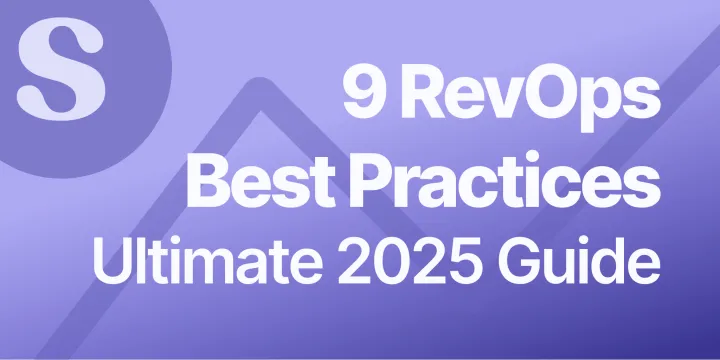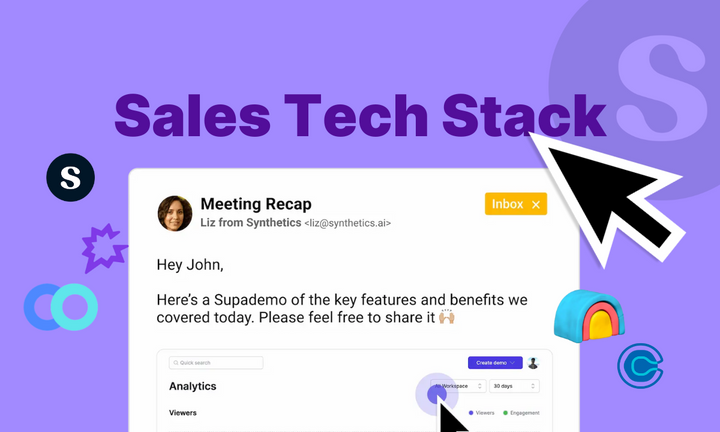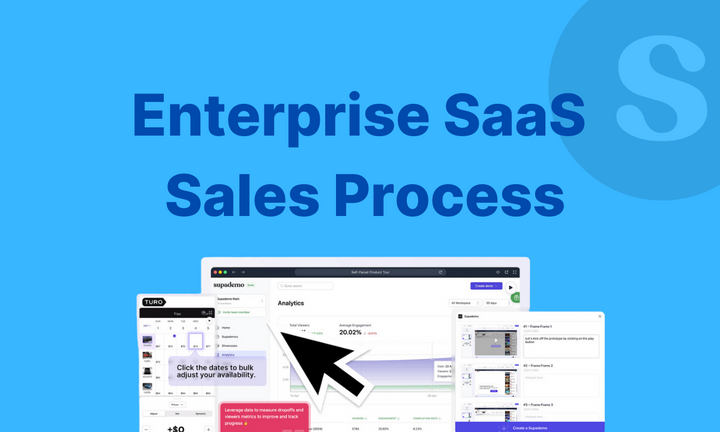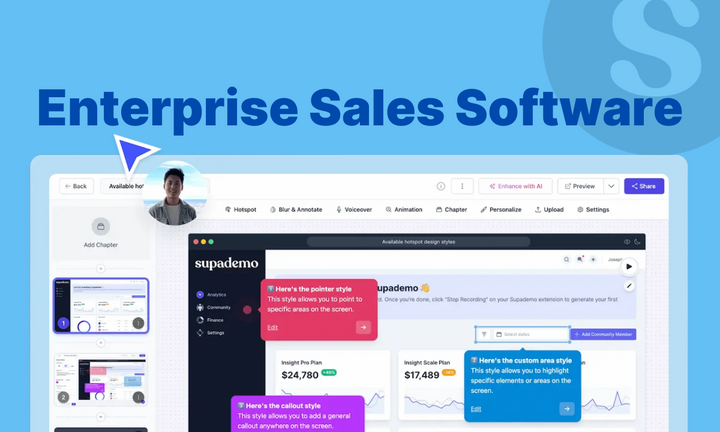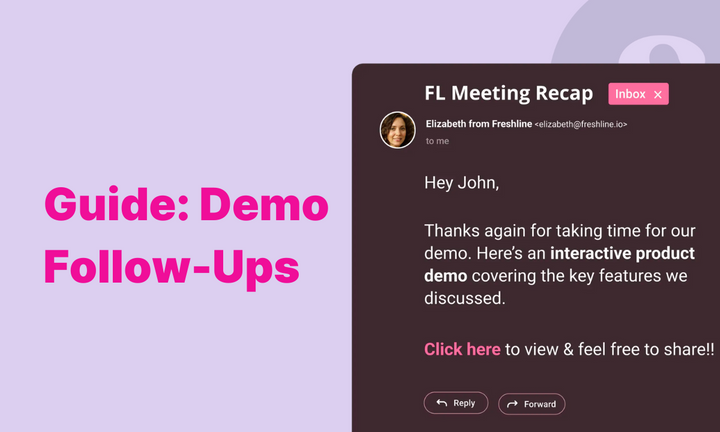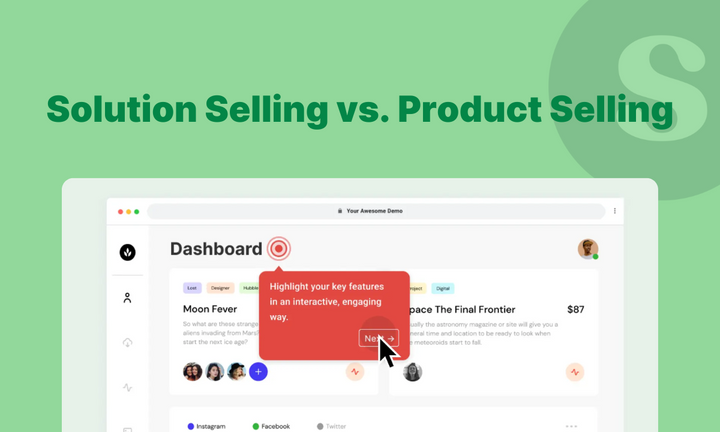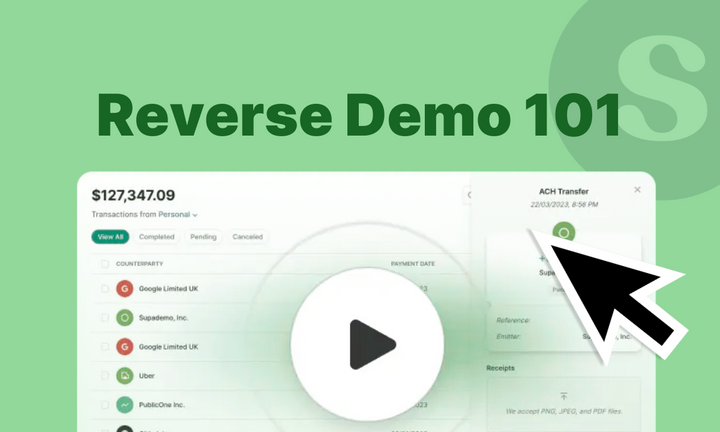Your revenue numbers don’t add up well. Marketing teams say that they are crushing their lead goals. But sales says those leads are not effective. Meanwhile, customer success is puzzling with onboarding issues, and finances can’t explain why the growth is stuck.
The problem isn’t with your team’s efforts. It’s the lack of a proper revenue engine. Businesses that focus strongly on RevOps see up to 20% increase in sales productivity. In fact, businesses grew three times faster when they implemented d RevOps.
This guide breaks down the 9 effective RevOps best practices and strategies of 2025 you can implement immediately to improve your business processes.
TL;DR: 9 RevOps best practices
2. Smart KPI implementation: Focus on metrics that drive real growth.
3. Pipeline optimization: Remove bottlenecks in your sales process.
4. Sales team enablement: Give reps the RevOps tools and training to succeed.
5. Data-driven decisions: Use insights to spot opportunities early.
6. Technology stack integration: Connect your tools for seamless workflows.
7. Customer journey enhancement: Create smooth handoffs between teams.
8. Process standardization: Build repeatable systems that scale.
9. Change management: Get teams to embrace new ways of working.
What is revenue operations (RevOps)?
B2B companies struggle with a broken revenue engine. Marketing generates leads that sales ignores. Sales closes deals that customer success can't onboard. And finance works with numbers that don't match reality. RevOps fixes this chaos by uniting your revenue teams under one strategic framework.
RevOps in B2B SaaS brings together sales, marketing, customer success, and finance teams to work as one unit—no more team friction about lead quality or missed forecasts. No more customers falling through the cracks between departments. Just smooth, predictable revenue growth.
The real power of revenue operations lies in its data-driven approach. It connects your tech stack to give you a clear view of your entire revenue process. You see exactly where deals slow down, which customers need attention, and where to focus your resources. An effective expense report template helps align financial tracking with RevOps, ensuring accurate cost management and resource allocation to drive growth and efficiency. This visibility helps you fix problems before they hurt your company’s growth potential.
Why is RevOps critical to B2B SaaS success?
Traditional revenue models are broken. Customers expect fast, seamless experiences—they won’t wait days for sales follow-ups or weeks for support. RevOps aligns teams, processes, and data so you can meet these demands with speed and precision.
In SaaS, revenue isn’t just about closing deals—it’s about tracking the entire customer journey, from first click to renewal and expansion. RevOps gives you a complete view to spot upsell opportunities and prevent churn before it happens.
Without revenue operations, fast-growing SaaS companies face data silos, misalignment, and inefficiencies. But with it, marketing, sales, and customer success work in sync. Marketing knows what makes a great lead, sales understands what resonates with each segment, and CS gets proactive alerts when accounts need attention.
Best of all, RevOps scales with your growth. As you expand, it standardizes processes, automates tasks, and focuses teams on high-impact activities—helping you grow faster without adding chaos.
9 RevOps best practices & strategies in 2025
1. Strategic forecasting and revenue planning
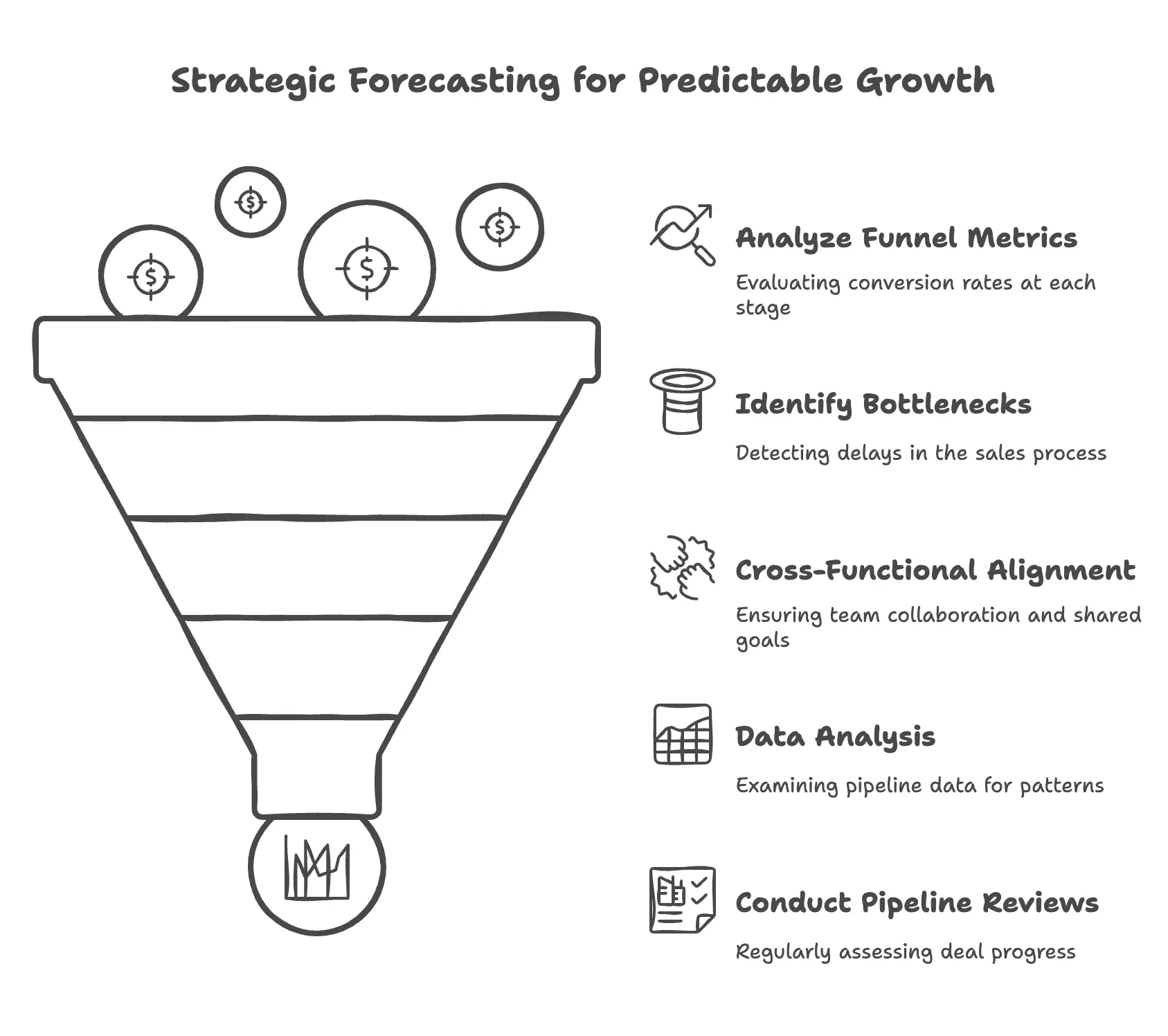
Your revenue goals are not reaching the mark. Sales reps make promises they can't keep. Marketing generates leads that never close. And your board wants accurate forecasts. Strategic forecasting fixes these problems by creating a clear roadmap for predictable growth.
Start with your funnel metrics. Break down conversion rates at each stage—from lead to opportunity to closed deal.
For instance, according to the HockeyStack B2B SaaS Marketing and Revenue Benchmark report, the average opportunity-to-close rate is 22.85%. Your numbers don't match up? Look for bottlenecks in your sales process. Maybe leads sit too long before first contact. Or deals stall in technical review.
Cross-functional alignment is another crucial factor to consider. Get sales, marketing, and customer success in the same room (virtual works too). Set shared goals and KPIs. Marketing should know exactly what makes a sales-qualified lead. Sales needs visibility into customer onboarding timelines.
Here's how to start: Pull your last 6 months of pipeline data. Track average deal size, sales cycle length, and win rates by segment. Look for patterns. Enterprise deals might take 90 days to close but convert at 40%. SMB closes faster at 45 days but converts at 20%. Use these types of benchmarks to build realistic forecasts.
Another effective strategy you can follow: set up weekly pipeline reviews. Focus on deals that need attention, not status updates. Use a simple red-yellow-green system to flag at-risk opportunities. Red means stuck deals needing executive support. Yellow shows slowing momentum. Green confirms deals on track. This system helps spot problems early when you can still fix them.
When Envision Pharma Group noticed a huge growth rate, their multiple sales teams were working in different ways, making it impossible to forecast accurately. They needed to bring order to chaos, fast. By building a unified commercial framework in Salesforce and connecting it with their financial systems, they created a single source of truth for their revenue data.
But the real win came from standardizing how all teams tracked and managed their pipelines. Now, whether it's their horizontal or vertical sales teams, everyone follows the same process for moving deals through stages and forecasting revenue. This shift from scattered systems to a unified approach made their growth manageable and predictable.
2. Smart KPI implementation
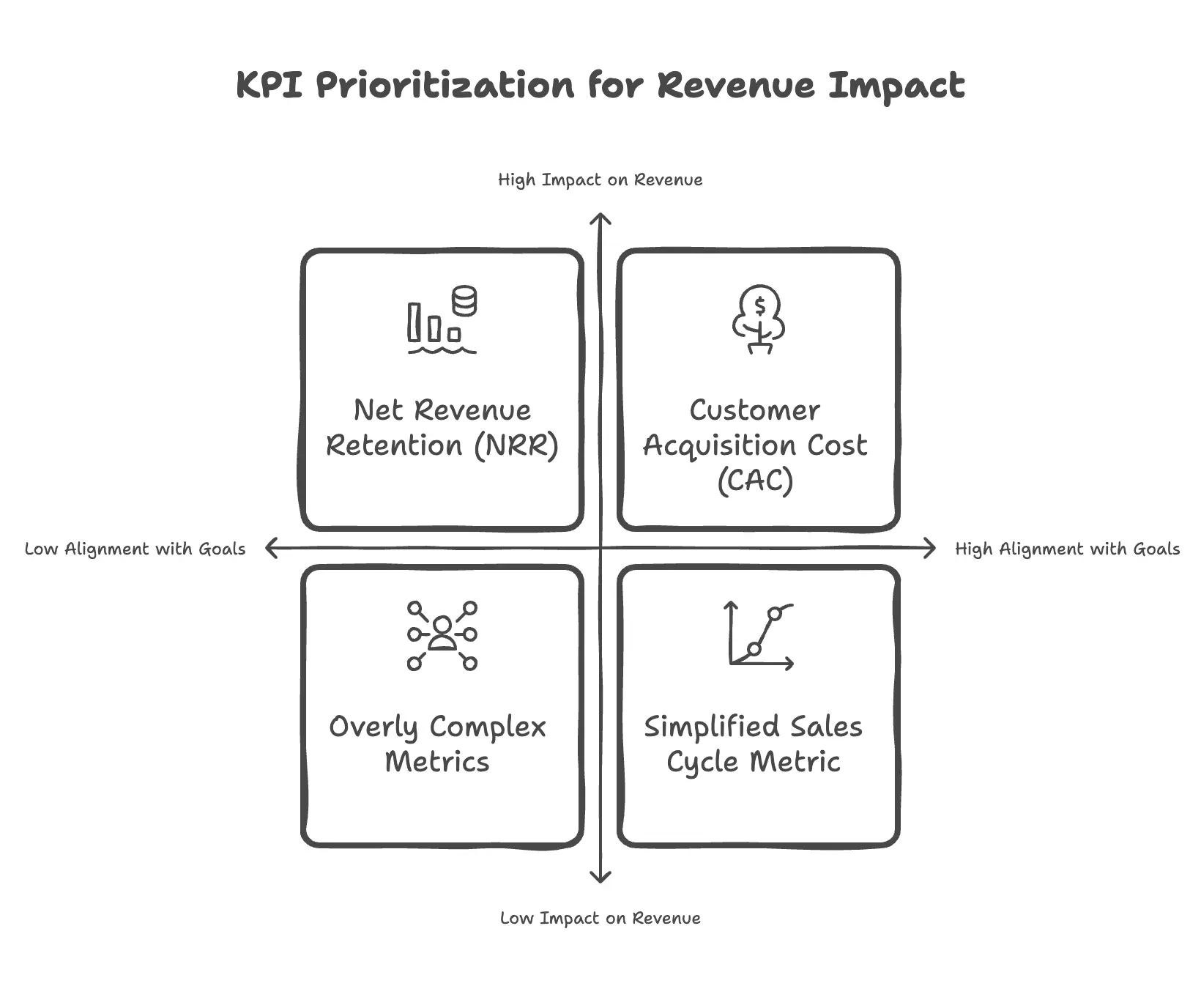
Most B2B SaaS companies track too many metrics. Your dashboards overflow with numbers that don't drive decisions. Smart KPI implementation means focusing on metrics that move revenue. Start with these core KPIs: customer acquisition cost (CAC), lifetime value (LTV), and net revenue retention (NRR).
Break down KPIs by department. Sales should track opportunity creation rate and average sales cycle. Marketing needs cost per lead and lead-to-opportunity conversion. Customer success focuses on time-to-value and expansion revenue. Limit each team to 3-5 key metrics. More than that creates confusion and splits focus.
Connect KPIs to real business goals. Want to reduce churn? Track product usage patterns and support ticket volume. Need faster sales cycles? Monitor time spent in each pipeline stage. Set realistic targets based on historical data. If your best month ever saw 25% growth, don't expect 50% next quarter.
Create a simple tracking system. Use your CRM for a single source of truth. Build automated reports that update daily. Share them in an easy-to-read format—maybe a TV dashboard in the office or a daily Slack update. When everyone sees the same numbers, teams stay aligned.
Test and adjust your KPIs quarterly. Some metrics might not matter as much as you thought. Others might need tweaking. For example, if marketing generates tons of leads but few convert, maybe lead quality score becomes more important than lead volume. Stay flexible and focus on metrics that drive revenue growth.
Muck Rack's deal desk team was spending hours every day just checking for errors in contracts and deals. As their sales team grew, this manual checking became a major bottleneck. By getting smart about their KPIs and building automated checks into their process, they eliminated nearly all contract errors and saved their team 2-3 hours daily.
They implemented HubSpot CRM effectively and built approval workflows that caught issues before they became problems. Every contract now follows the same template and validation process, which has made scaling their sales process much more efficient.
3. Pipeline optimization
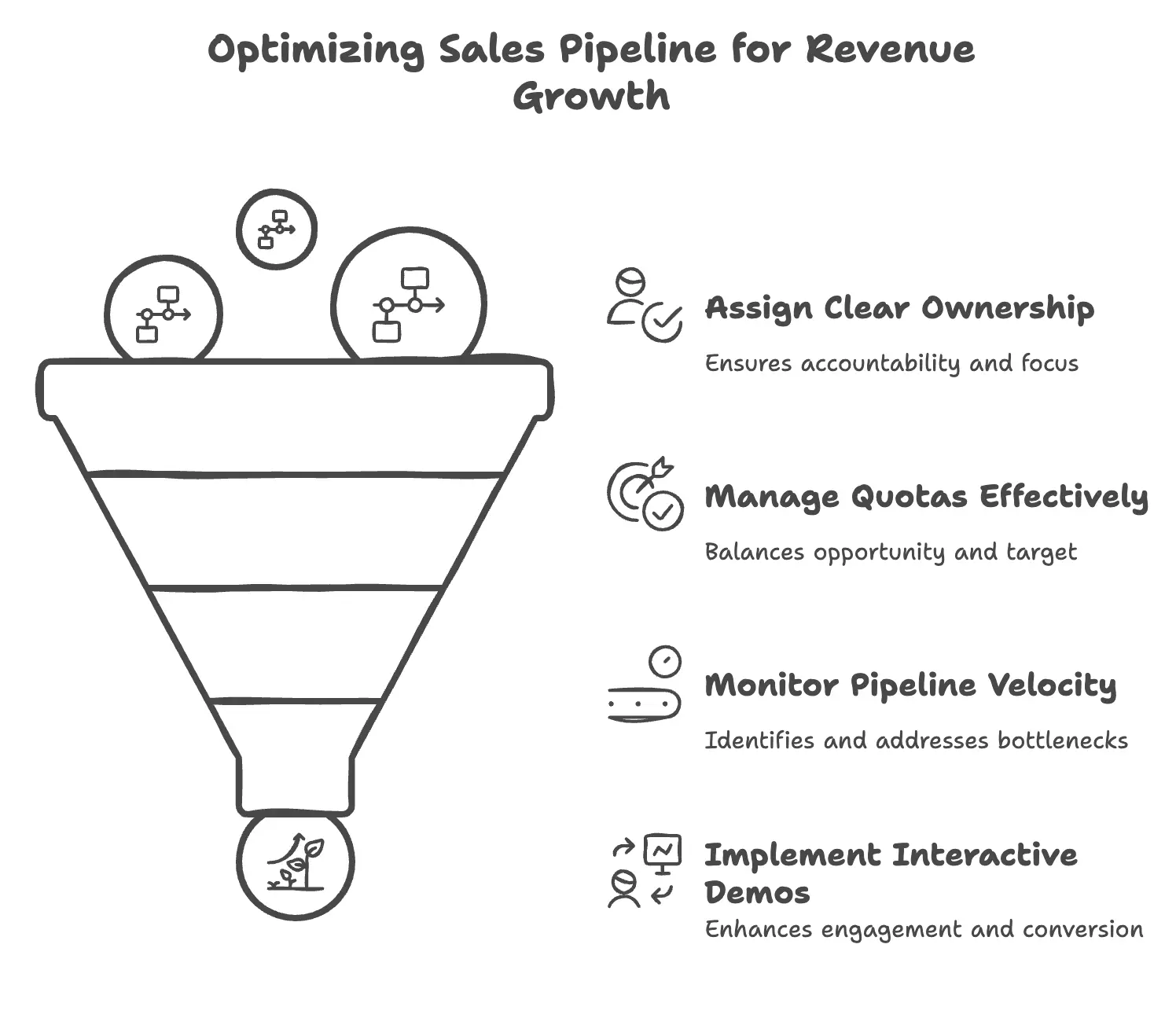
Your sales pipeline leaks revenue at every stage. Deals get stuck. Follow-ups fall through the cracks. And promising opportunities vanish for no solid reason. Pipeline optimization helps you spot and fix these issues before they affect your revenue growth potential.
Start with clear ownership. Every account needs one assigned owner. No more "whoever sees it first" approach. Use proper mapping based on company size, industry, or geography. For example, Enterprise AEs handle deals above $50k, Mid-Market takes $10-50k, and SMB manages deals under $10k. This clarity can significantly increase win rates.
Quota management is also important. Your AEs should maintain 10-15x their quota in active opportunities. Less means they'll miss targets. More leads to scattered focus. Take a $100k monthly quota. Your AE needs $1-1.5M in active pipeline. Track this weekly. When pipeline drops below 10x, trigger more prospecting or marketing campaigns.
Another effective strategy is to watch for pipeline velocity. Measure how long deals spend in each stage. Set benchmarks—maybe 14 days from demo to proposal, 7 days for contract review. Deals that sit too long usually don’t end up converting. So, create automated alerts when opportunities exceed stage timeframes. This helps sales managers spot stuck deals early.
Use interactive demos to speed up the sales process. With Supademo, your sales team can easily create interactive product demos and send prospects personalized product tours they can explore on their own time. This increases user engagement by 250% and drastically reduces the sales cycle.
Popular newsletter brand beehiiv converted 50% more leads by using Supademo. The best part is you can track which features prospects click most. Then use these insights to focus future demos on what matters to each buyer.
Whatagraph's story shows how cleaning up your pipeline pays off. Their sales process was a mess—deals got stuck, follow-ups were missed, and nobody knew what was happening in their pipeline.
They fixed this by standardizing their sales process and cleaning up their Salesforce data. The result was that—their sales team could spot stuck deals faster, close more business, and predict which deals would close instead of just guessing.
4. Sales team enablement
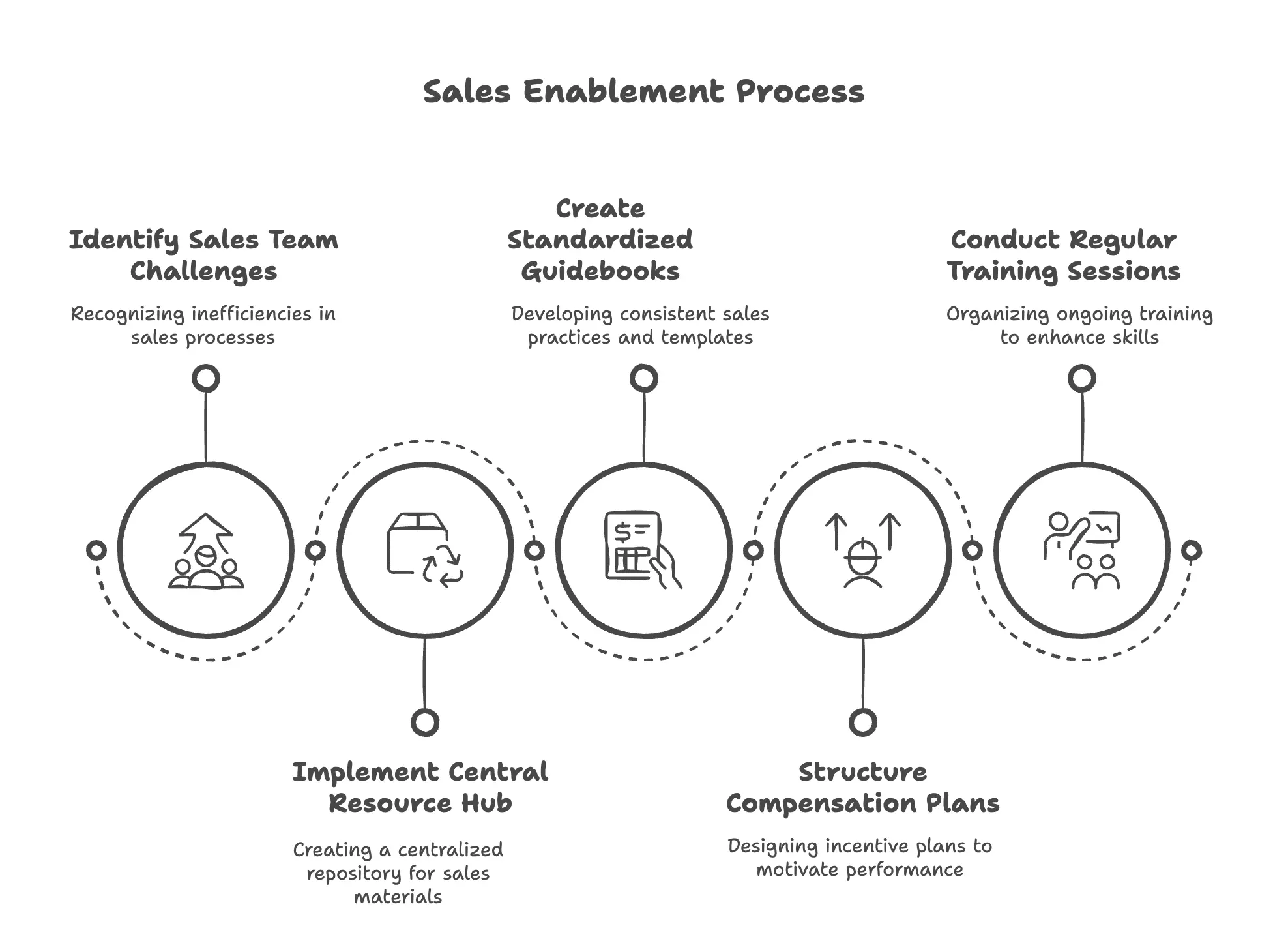
Your sales team wastes time recreating presentations, hunting for case studies, and figuring out pricing. Meanwhile, deals slip away to faster competitors. Sales enablement gives reps everything they need to close deals quickly.
Build a central resource hub. Store all sales materials in one easy-to-search place—pitch decks, product specs, customer stories, pricing guides. Tag content by buyer persona, deal stage, and use case. Sales reps save up to 15 hours every week when they can find materials fast.
Create standardized guidebooks. Document your best sales practices. Include email templates, call scripts, and objection handling guides. Break them down by buyer type and deal stage. New reps ramp up faster with clear guidebooks. Experienced reps close more consistently.
Compensation matters, too. Structure commission plans that drive the right behavior. Use a 70/30 split between base salary and commission for SDRs. For AEs, target total comp at 4-5x base salary. Add accelerators above quota—maybe 12% commission at 100% quota, 15% at 120%. This motivates high performance without encouraging bad deals.
Set up regular training sessions. Run weekly team meetings to share wins and losses. Practice pitches together. Review tough objections. Bring in customers to share feedback. The best sales teams spend a huge chunk of their time learning and improving. Make training interactive—role-play beats PowerPoint every time.
The marketing team of Exclaimer was generating plenty of leads, but the sales team couldn't track them efficiently. They made a bold move—switching their entire system to Salesforce. The smart part was that they rolled it out gradually, making sure their teams could keep selling while learning the new system. Within three months, they transformed how their sales team worked.
Now, reps could create quotes instantly instead of jumping between systems. They got clear dashboards showing their performance metrics, and for the first time, they could see exactly how marketing efforts translated into sales. And the best part was their sales ops team learned to manage the system themselves, making them more self-sufficient. It's a perfect example of how giving your sales team the right tools—and training them properly—can remove roadblocks and let them focus on what they do best—which is selling.
5. Data-driven decision making
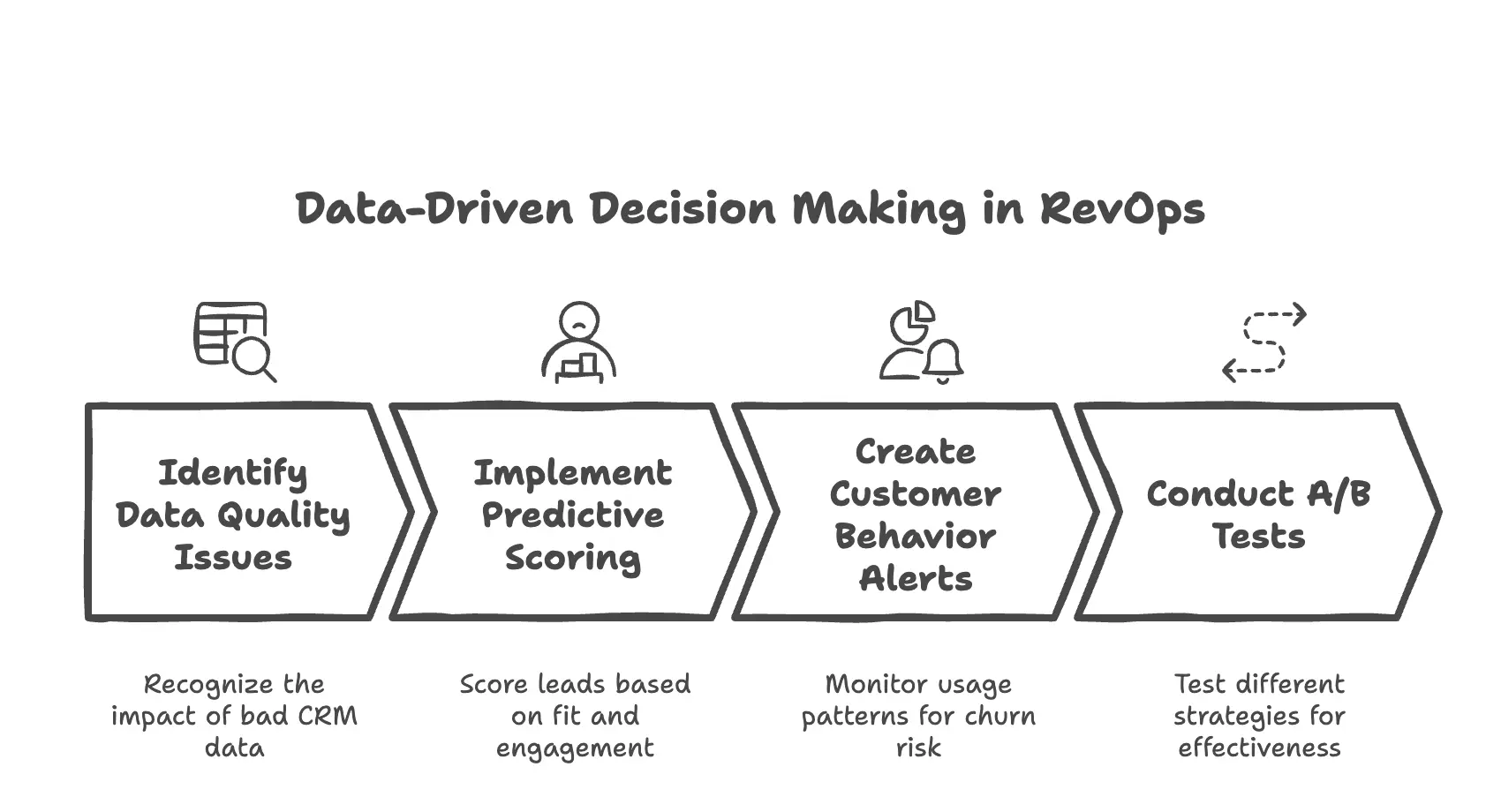
Marketing spends the budget on channels that might work. Sales focuses on deals that feel promising. Data-driven decision making removes the guesswork and shows you exactly what drives revenue.
Start with clean data. According to research reports, over 57% of companies think bad CRM data can make them lose their existing customer base. Set strict rules for data entry. Make fields like deal size, close date, and next steps mandatory. Run weekly data audits. Flag incomplete records for cleanup. Companies with clean data close 30% more deals.
Use predictive scoring. Score leads based on fit and engagement. Look at company size, industry, and tech stack for fit. Track website visits, email opens, and demo requests for engagement. Combine these into a 0-100 score. Focus sales efforts on leads above 70. This approach can significantly increase conversion rates.
Create customer behavior alerts. Track product usage patterns that signal churn risk or expansion opportunity. Drop in usage? Trigger a customer success check-in. Spike in feature adoption? Time for an upgrade conversation. Set up daily alerts in Slack. Top RevOps teams spot opportunities multiple days before they happen.
Test everything with A/B test experiments. Try different email subject lines, demo formats, or pricing models. Run each test for at least 30 days, and see what works best.
Retool's experience highlights the importance of data-driven decisions. Initially facing a 50% error rate in their contracts, they implemented a data-driven approach to their quote-to-cash process.
By focusing on clean data and automated validation, they reduced contract errors to less than 1%, demonstrating how proper data management can transform business operations.
6. Technology stack integration
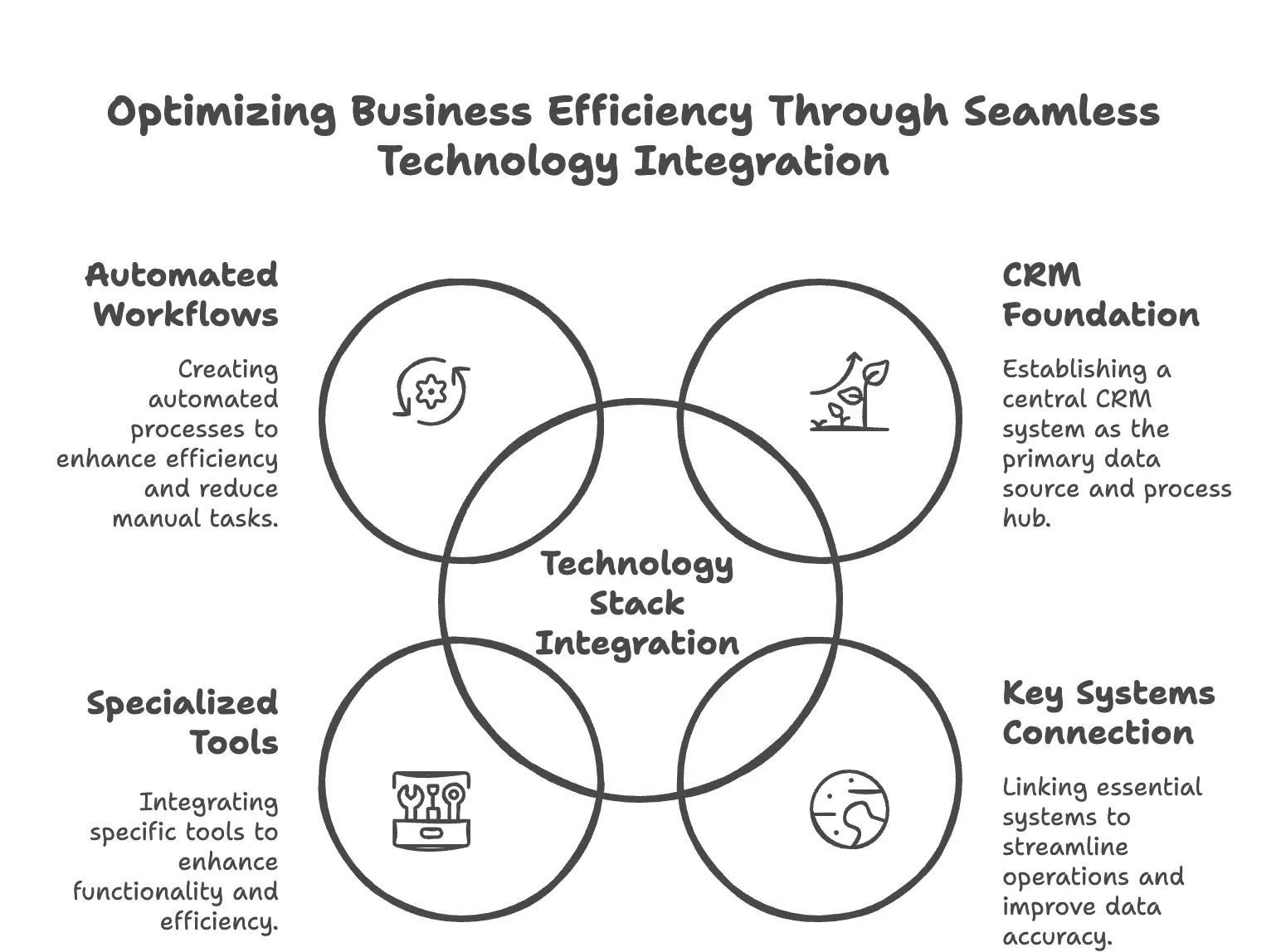
Technology stack integration connects your tools into one smooth workflow. No more copy-paste between systems.
Start with your CRM foundation. Over 9 in 10 companies consider CRM as one of the essential tools that help them meet their revenue goals.
Pick one CRM as your single source of truth. Salesforce, HubSpot, or similar. Clean up your data before adding more tools. Map out your core processes—lead capture, opportunity management, customer communications. Your CRM should handle 80% of these.
Connect your key systems. Link your marketing automation to CRM. Sync calendar apps for booking demos. Add contract tools for faster closing. Each integration should save time or improve data accuracy.
Add specialized tools carefully. Need better demos? Add Supademo. Want smoother contracts? Try DocuSign. But test each tool first. Run a 30-day pilot with one team. Measure the impact. New tools should show clear ROI within 90 days.
Set up automated workflows. When a lead fills your contact form, create a CRM record, notify sales, and schedule follow-up tasks. When a deal closes, trigger customer onboarding and billing processes. Build these workflows gradually. Start simple, then add complexity as needed.
When Marq needed to overhaul their technology stack, they faced significant challenges with disconnected systems and high software costs. By implementing an integrated CRM solution with connected tools and automated workflows, they achieved $77,000 in annual savings while improving their sales process efficiency.
The key was carefully selecting and integrating tools that worked seamlessly together, starting with their core CRM and gradually adding specialized solutions based on proven ROI.
7. Customer journey enhancement
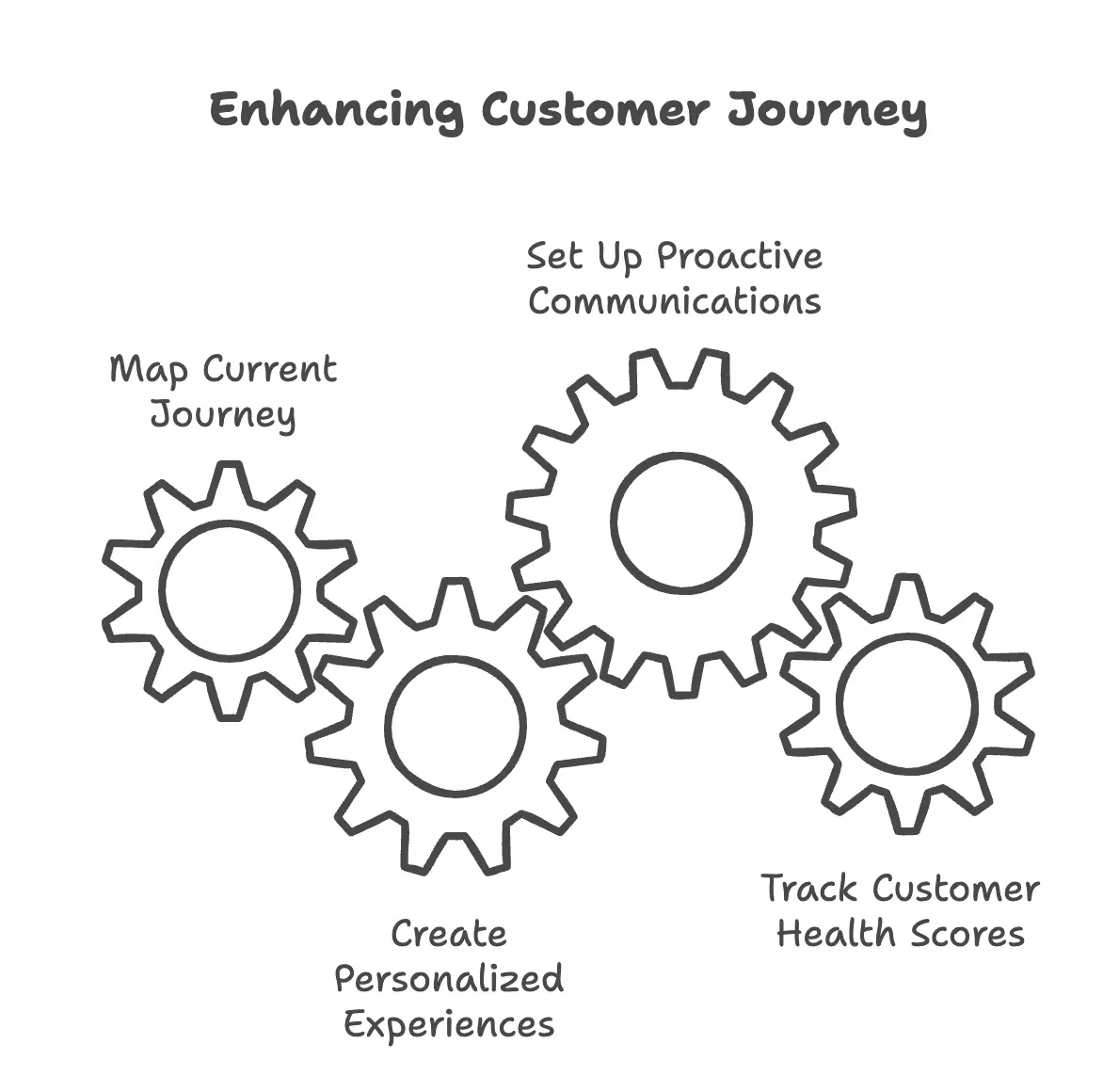
Your customers feel lost and frustrated. They repeat their story to every new team member. Support tickets drag on for days. And your product training puts people to sleep. Customer journey enhancement fixes these problems by creating a smooth, engaging experience from first click to renewal.
Map your current journey first. Track every customer touchpoint—from website visits to support tickets. Look for friction points. Common issues? Slow response times between teams. Repetitive onboarding questions. Confusing product tutorials. Companies that fix these issues often see higher retention rates.
Create personalized experiences. Use interactive demos to show prospects exactly how your product solves their problems. Replace boring slides with hands-on product tours. Add custom welcome screens for different user types. This approach cuts onboarding time and boosts feature adoption.
Set up proactive communications. Don't wait for customers to report problems. Monitor product usage patterns. Notice a drop in logins? Send a helpful tip. See increased feature use? Offer advanced training. Build automated alerts that trigger these messages at the right time.
Track customer health scores. Combine usage data, support tickets, and engagement metrics into one score. Set different thresholds by customer segment. Enterprise accounts might need 90% health scores, while small businesses can run at 70%. Use these scores to predict and prevent churn.
A healthcare provider was struggling with a fragmented patient experience - from messy scheduling to slow billing and scattered communications. By integrating their CRM with their medical records system, they transformed the entire patient journey.
The new streamlined system handled everything from appointment scheduling to follow-up care automatically. This not only made life easier for the medical team but also dramatically improved how patients experienced their care. Instead of repeating information at every touchpoint, patients now moved smoothly through their healthcare journey, with all their information flowing seamlessly between systems.
8. Process standardization
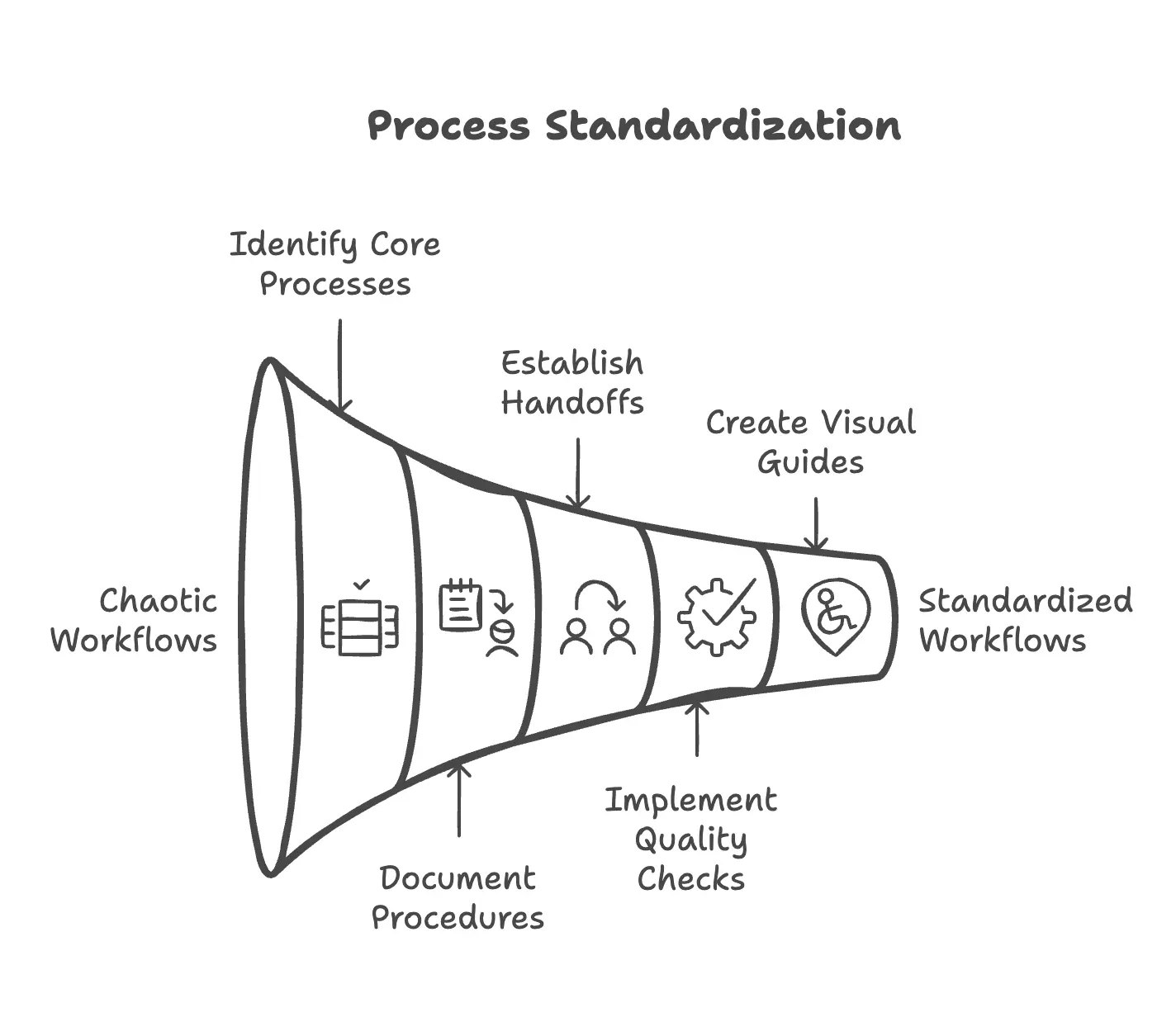
Your teams work in chaos. Sales reps handle deals differently. Support tickets bounce between departments. Nobody knows the right approach to do anything. Process standardization creates clear, repeatable workflows that save time and reduce errors.
Start with core processes first. Focus on revenue-critical workflows like lead qualification or customer onboarding. Document each step. Who does what? When? Using which tools? Get input from top performers. What makes them successful? Turn these insights into standard procedures.
Create clear handoffs between teams. Marketing passes leads to sales at 50 engagement points. Sales transfers customers to success after three onboarding calls. Support escalates technical issues to engineering within 4 hours. Write these rules down. Make them visible to everyone.
Build quality checks into workflows. Use automation where possible. CRM validates contact data before deals move forward. Support tickets need two replies before closing. Customer success runs health checks before renewal talks. These kinds of small but effective process standardization prevent costly mistakes.
Make processes easy to follow. Create visual guides and checklists. Record short video tutorials. Build templates for common tasks. The best process documentation fits on one page. If it's longer, people won't use it. Update these guides monthly based on team inputs.
Repsly demonstrates the power of process standardization. Initially struggling with a cumbersome, error-prone deal desk operation, they transformed their entire sales process through standardization.
By implementing clear workflows and automated checkpoints within HubSpot, they created a streamlined, scalable operation that significantly reduced errors and accelerated deal closure times. Their success came from documenting and standardizing each step of their sales process, from initial contact to final close.
9. Change management
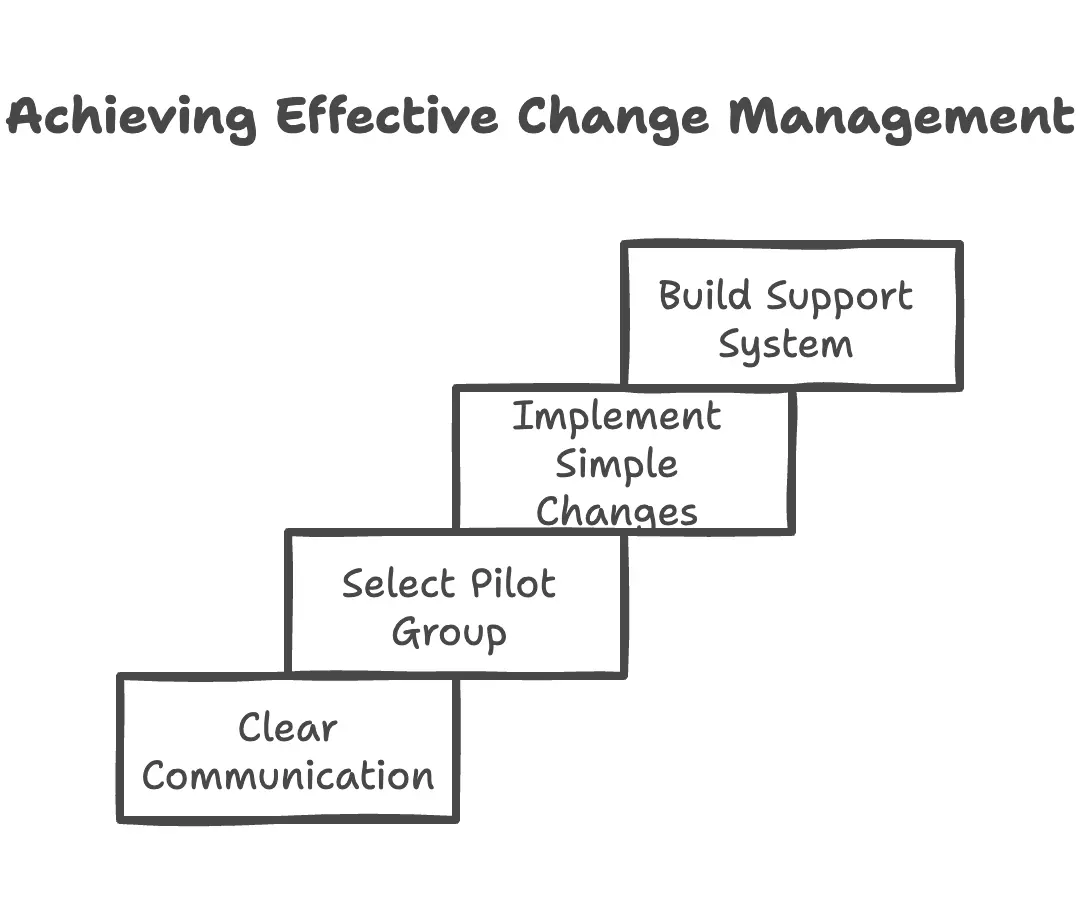
Change management turns challenges like teams resisting new tools or expensive software sitting unused into wins by getting everyone on board with new ways of working.
Start with clear communication. Explain why changes matter. Show how new processes make jobs easier. Share success stories from early adopters. People support what they can understand.
Pick the right pilot group. Choose a small team that's open to change. Maybe your top-performing sales pod or most tech-savvy customer success group. Give them extra support. Let them work out the bugs. Their success stories will convince others.
Start with simple changes that show fast results. Maybe automate a tedious report that saves 2 hours weekly. Or streamline lead routing to cut response time by 50%. Document these wins. Share them in team meetings. Success breeds more success.
Build a support system. Assign change champions in each department. Run weekly office hours for questions. Create easy-to-follow guides and videos. People need to know help is available. The best tools mean nothing if your teams can't or won't use them.
Jabra Hearing's transformation illustrates effective change management in action. When facing rapid growth without internal Revenue Operations support, they needed to implement new systems while keeping their teams productive.
Through a carefully planned change management approach, they successfully grew their orders per week by eight times year-over-year while maintaining team efficiency. One of the key success factors was providing consistent support and training ensuring teams could adapt to the new processes without disrupting ongoing operations.
What are common RevOps implementation challenges?
Now most RevOps initiatives struggle in the initial months of implementation. And that’s not because of the strategy itself. But rather, because of some common challenges that derail implementation.
Let’s dive in and take a quick look at some common challenges of revenue operations implementation and how to fix them.
Data quality and trust issues
Your revenue data tells different stories across different systems. Sales reports show one pipeline number, finance sees another, and marketing works with a third version. This mess leads to endless debates about "whose numbers are right" instead of meaningful discussions about growth. The worst part? Nobody trusts the data anymore, so teams create their own spreadsheets, making the problem even worse.
The solution lies in establishing a single source of truth.
- Start by auditing your current data across all systems.
- Clean up the critical fields first—deal values, close dates, and customer information.
- Create strict rules for data entry and automate data validation where possible.
- Set up weekly data quality checks and make someone specifically responsible for data accuracy.
Once teams see reliable data, they'll naturally stop using their separate spreadsheets.
Team resistance and change fatigue
Your teams have been through multiple "transformations" before. Each time, they learned new tools and processes, only to see those initiatives fade away. Now they're skeptical of another change. Customer success sticks to their old workflows. Sales reps avoid the new CRM fields. And marketing keeps their own tracking systems.
Break this cycle by focusing on quick, visible wins. Find one painful process that affects everyone—like manual reporting or deal handoffs. Fix it completely. Show exactly how much time it saves (track the before and after). When teams see real benefits in their daily work, resistance naturally fades. Build on these early wins to create momentum for bigger changes.
System overload and integration issues
Your tech stack has grown into a tangled mess. Different teams use different tools that don't talk to each other. Sales data sits in the CRM, customer info lives in the support system, and usage data stays trapped in the product analytics tool. The result? Hours wasted copying data between systems and inconsistent information everywhere.
Solve this by simplifying your stack.
- Map out every tool and its core purpose.
- Find overlaps where multiple tools do the same thing. Keep only the essential systems that work well together.
- Build clean integrations between your core platforms—usually your CRM, customer support, and billing systems.
This creates a smooth flow of information across teams without manual work.
Process gaps and handoff problems
Critical information gets lost between teams. Marketing qualified leads disappear into a black hole. New customers wait days for onboarding. Support tickets bounce between departments with no clear owner. These gaps frustrate customers and waste everyone's time.
Fix this by mapping your entire revenue process, from first touch to renewal. Document exactly how leads and customers move between teams. Define clear triggers for handoffs—specific actions or criteria that signal when it's time to transfer ownership. Create standard procedures for each handoff, including what information needs to be shared. Most importantly, assign clear owners for each stage of the journey.
Resource and focus constraints
Your RevOps team tries to fix everything at once. They jump between urgent requests, fight daily fires, and struggle to complete long-term projects. This scattered approach leads to half-finished initiatives and mounting technical debt.
The answer is a strong focus on prioritization. Use a simple impact vs effort framework to rank all projects. Focus on one major initiative at a time—give it full attention until it's working smoothly.
Break big projects into 30-day chunks with clear deliverables. This focused approach gets more done than trying to tackle everything at once. It also makes it easier to show progress and maintain momentum.
How to get started with RevOps?
Want to build a RevOps function but not sure where to start? Let's break down the implementation process into clear, actionable steps. Here's your full roadmap to RevOps success.
1. Set the right foundation
Start with a revenue audit. Pull data from your CRM, support system, and finance tools. Look for gaps in your customer journey and spots where deals get stuck. Document which teams handle each stage of the revenue process. This audit reveals your biggest opportunities for improvement.
Build your core RevOps team. You need three key roles: a process expert to design workflows, a data analyst to track metrics, and a tech specialist to manage tools. For smaller companies, one person can wear multiple hats. The important part is having clear ownership of the revenue operations function.
2. Proceed with implementation
| Focus Area | Short-Term Goals | Long-Term Goals |
|---|---|---|
| Data & Tools | Clean up CRM data, Set required fields | Full tech stack integration |
| Processes | Standardize deal stages, Define handoffs | End-to-end workflow automation |
| People | Basic training programs, Clear ownership | Advanced enablement system |
| Metrics | Pipeline reporting, Revenue forecasts | Predictive analytics |
Start with one high-impact project. Pick something visible that affects multiple teams—like streamlining how leads move from marketing to sales. Create clear definitions for each stage. Build simple handoff rules. Test the new process with a small group before rolling it out company-wide.
Set up basic reporting systems. Focus on pipeline health, conversion rates, and revenue forecasts. Don't overload teams with metrics. Pick 3-5 key numbers for each department. Make these numbers visible in weekly team meetings and monthly reviews.
3. Scale & automate processes
Now automate your core processes. Connect your tech tools to remove manual data entry. Build alerts for stuck deals and at-risk customers. Create guidebooks for common scenarios like deal acceleration or renewal conversations. Good automation saves time while improving consistency.
Want to speed up your RevOps implementation? Try Supademo for free! Create interactive product demos in just a few minutes to show exactly how your tools and processes work.


